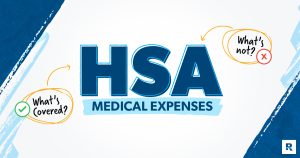Marcos Mesa Sam Wordley/Shutterstock
Key takeaways
- The federal government offers both unsubsidized and subsidized loans through the Direct Loan program.
- Subsidized loans are the more affordable option, as interest only accrues during certain periods.
- Unsubsidized loans accrue interest as soon as they are disbursed, even if you are currently enrolled in college.
- Subsidized loans should be your first option, but if you don’t qualify, unsubsidized loans could still work, as they are still typically more affordable than private student loans.
If you decide to take out a federal student loan to pay for college, there are two general options: subsidized or unsubsidized. If you take out a Direct Subsidized Loan, you will not be charged interest while you’re in school, during your grace period, or during other periods of deferment. If you take out a Direct Unsubsidized Loan, interest will accrue on your loan as soon as it is disbursed, even while you are in school. The two also differ in terms of who qualifies and how much you can borrow.
What is the difference between subsidized and unsubsidized loans?
Both Direct Subsidized and Direct Unsubsidized Loans are part of the federal Direct Loan Program. When you submit the Free Application for Federal Student Aid (FAFSA), your school sends you a financial aid award letter that explains what you qualify for and how much you can borrow.
Here’s how subsidized and unsubsidized student loans work:
| Direct Unsubsidized Loans |
Direct Subsidized Loans |
|
| Who pays interest costs? | The borrower | The U.S. Department of Education while the student is enrolled, during grace periods and during deferment. The borrower during repayment and forbearances. |
| What’s the aggregate maximum limit? | Dependent undergraduate students: $31,000 Independent undergraduate students: $57,500 Graduate students: $138,500 |
Undergraduate students (dependent and independent): $23,000 |
| What do you need to qualify? | Does not require proof of financial need | Must demonstrate financial need |
| Who can borrow? | Undergraduate students, graduate students and professional degree students | Undergraduate students |
| Are there extra costs involved? | Loan fee: 1.057% for loans disbursed on or after Oct. 1, 2020 | Loan fee: 1.057% for loans disbursed on or after Oct. 1, 2020 |
What is a subsidized loan?
A Direct Subsidized Loan is a type of federal student loan that undergraduate students can receive by showing financial need. They’re less expensive than Direct Unsubsidized Loans because interest doesn’t accrue on them during certain time frames. The U.S. Department of Education pays interest on subsidized loans while the borrower is enrolled at least half time in school, during a six-month grace period after graduation and during other deferment periods.
Your school decides how much you can borrow based on the cost of attendance, your demonstrated financial need, your year in school and any other financial aid you receive. You can borrow a maximum of $23,000 in Direct Subsidized Loans over the course of your education, though limits cap out at $5,500 a year. Graduate and professional students can’t borrow subsidized loans.
The federal government sets federal student loan interest rates, and the rates may change each school year. For the 2024-25 academic year, undergraduate students have a 6.53 percent interest rate on Direct Subsidized Loans. For 2025-2026, experts have predicted that this rate will decrease due to the recent federal funds rate cut.
What is an unsubsidized loan?
A Direct Unsubsidized Loan is a type of federal student loan that starts accruing interest as soon as money is disbursed to your school. You may choose not to pay this interest while you’re in school and during your six-month grace period, but any unpaid interest that accumulates during this time will be added to your total balance.
Dependent students can borrow a total of $31,000 in combined unsubsidized and subsidized loans, while independent undergraduate students can borrow up to $57,500 total. Graduate or professional students can borrow a total of $138,500 in Direct Unsubsidized Loans, including any undergraduate loans. Medical school students can borrow up to $224,000 in Direct Unsubsidized Loans.
Direct Unsubsidized Loans for undergraduates have a 6.53 percent interest rate for the 2024-25 school year. Direct Unsubsidized Loans for graduate students have an 8.08 percent interest rate for 2024-25. Unlike with subsidized loans, you do not have to demonstrate financial need to qualify for unsubsidized loans — these loans are open to all borrowers who are able to receive federal aid.
Which is better: Subsidized or unsubsidized loans?
Subsidized loans are the best first choice for borrowers; since the federal government covers the interest that accrues on your loans, it’s less money for you to pay out of pocket. This is especially true for borrowers who are unable to make interest payments while they’re in school.
However, some borrowers cannot demonstrate the financial need necessary to qualify for this type of loan, leaving unsubsidized loans as the only option. Unsubsidized loans are still worth considering — while interest will accrue immediately, these loans still have low interest rates and benefit from federal protections and eligibility for income-based repayment programs.
Should I take out federal or private student loans?
As you consider how to pay for college, it’s wise to take advantage of any grant or scholarship opportunities available to you before you start to look at financing options. If you do have to borrow money, it’s almost always best to start with federal loans. These loans come with many benefits unique to the federal government, like income-driven repayment plans, long forbearance and deferment periods and loan forgiveness options.
If grants, scholarships and federal loans don’t cover your costs, you may need to stack on private student loans to finance the remaining balance. Private student loans often have higher interest rates if you or your co-signer have average credit, and they don’t offer the same benefits as federal loans. With that said, private student loans can be a useful tool if you’ve hit the loan maximum on federal loans or if you have exceptional credit.
Bottom line
Subsidized loans are available to undergraduate students who can demonstrate financial need, and interest does not accrue during grace periods or when the loans are in deferment. Unsubsidized loans accrue interest right away but are easier to access since they don’t require proof of financial need and have higher borrowing limits. It’s smart to start with subsidized loans if they’re available to you. Otherwise, unsubsidized loans could work since they are often less costly than private loans and offer federal protections.
Read the full article here










